- Best overall: Google Workspace
- Best for users in the Microsoft ecosystem: Microsoft OneNote
- Best for budget-conscious businesses: ClickUp
- Best for creative teams and startups: Notion
- Best for large enterprises with complex project management needs: monday work management
- Best for project process optimization: Wrike
- Best for spreadsheet-based project management: Smartsheet
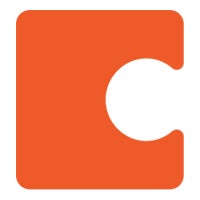
Coda is a productivity and collaboration tool that combines the functionalities of document management (word processing), spreadsheets and databases to create a single customizable workspace.
While Coda has recorded significant success as a productivity tool, it may not be the best option for some users looking for the project management software that best meets their needs. There are many Coda alternatives and competitors on the market, so I evaluated the best options in this guide to help you determine which one fits your business.
Fellow TechRepublic contributing writer Collins Ayuya reviewed Coda extensively in a separate article to help you learn about its features, functionalities, strengths and weaknesses and pricing.
Featured Partners
Top Coda competitors and alternatives: Comparison table
| Coda | |||||||
| Google Workspace | |||||||
| Microsoft OneNote | |||||||
| ClickUp | |||||||
| Notion | |||||||
| monday work management | |||||||
| Wrike | |||||||
| Smartsheet |
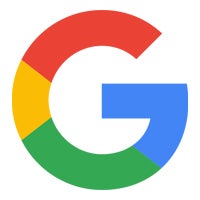
Google Workspace: Best overall
Google Workspace (formerly G Suite) is a cloud-based productivity platform with various collaboration tools like Drive, Gmail, Meet, Chat, Calendar, Docs, Sheets, Slides, Forms, Sites and more—each tool serving a different purpose. Google Docs is a word-processing app that allows users to create text content and collaborate with other team members in real time. With the Meet app, teams can conduct video meetings and conferences, while Chat allows for instant messaging and group conversations.
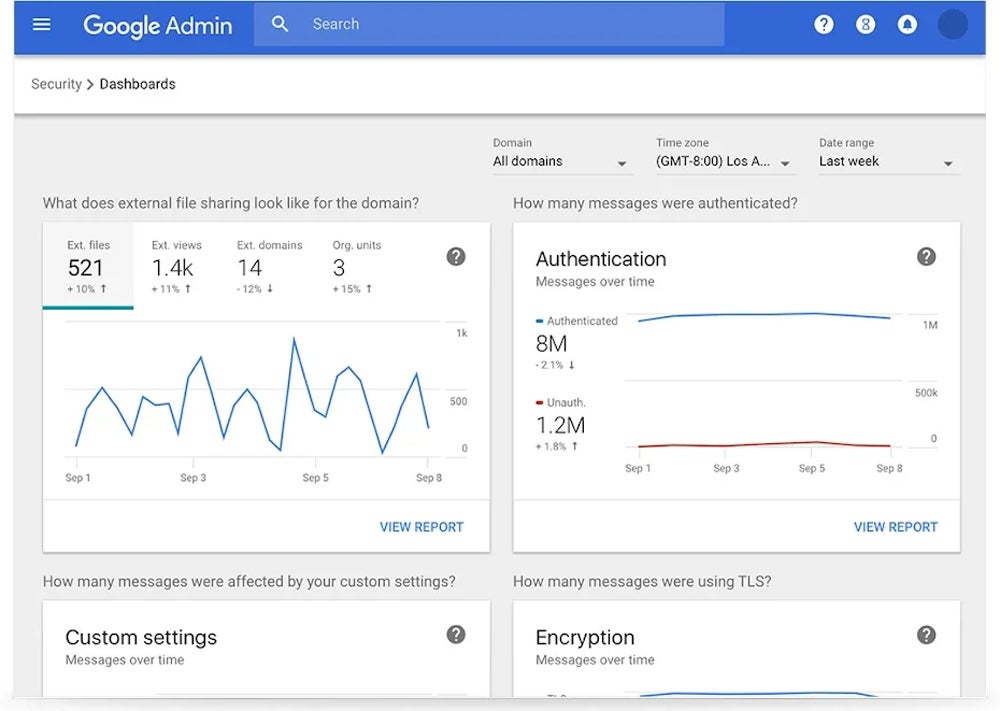
The Drive app is a cloud storage system that enables users to store and access files on the go from any device with internet access. The platform also enables businesses to create custom emails for their employees.
Why I chose Google Workspace
I selected Google Workspace for its extensive collaboration features. Although Coda also offers collaborative capabilities, Google Workspace stands out for its long list of tools and applications that allow teams to easily and seamlessly work together via various channels, including chat and video.
Pricing
The platform offers four pricing plans with various inclusions. You can either pay per month or per year. It also has a 14-day free trial to help you get familiar with the platform before purchasing a subscription.
- Business Starter: It costs $5.40 per user per month if billed annually or $6.48 per user per month if billed monthly.
- Business Standard: It costs $10.80 per user per month if billed annually or $12.96 per user per month if billed monthly.
- Business Plus: It costs $18 per user per month if billed annually or $21.60 per user per month if billed monthly.
- Enterprise: Custom quote.
Features
- Custom business email for users.
- Video conferencing capability.
- U.S. or international dial-in phone numbers.
- Group messaging.
Pros and cons
| Pros | Cons |
|---|---|
|
|
For more information, read our Google Workspace cheat sheet to learn how it can help improve your workflow.
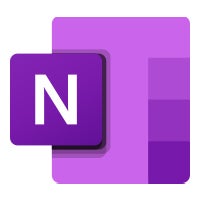
Microsoft OneNote: Best for users in the Microsoft ecosystem
Overall rating: 4.3 out of 5
Microsoft OneNote is a digital note-taking, note-capturing, file storage and sharing application that allows users to create, organize and share notes using text, images, audio and video. The free version offers up to 5 GB storage, while the paid plans include 1 TB storage. OneNote is available on Windows, macOS, iOS and Android and as a web app, allowing users to access their notes across different devices.
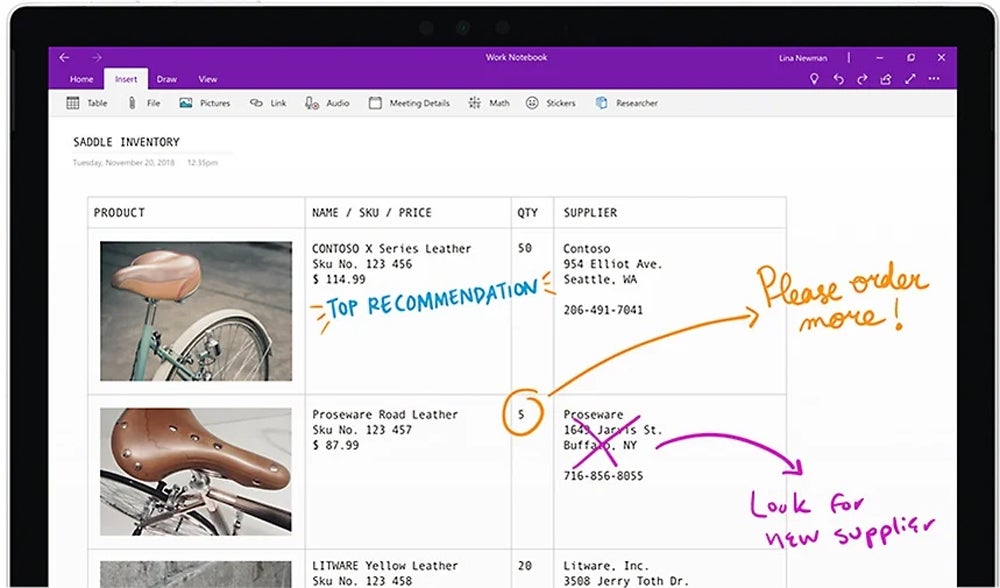
Why I chose Microsoft OneNote
I picked Microsoft OneNote as one of the best Coda alternatives for its simplicity and ease of use, especially for Microsoft ecosystem users. The tool enables users to create and share documents with ease and allows them to store their files for real-time retrieval—both helpful in keeping teams aligned, especially when dealing with complex projects.
Pricing
Microsoft OneNote is available in two editions: for home and for business.
For home
- Microsoft 365 Family: $99.99 per year or $9.99 per month for 1–6 people.
- Microsoft 365 Personal: $69.99 per year or $6.99 per month for one person.
- Office Home & Student 2021: One-time purchase of $149.99.
For business
- Microsoft 365 Business Basic: $6 per user per month.
- Microsoft 365 Business Standard: $12.50 per user per month.
- Microsoft 365 Business Premium: $22 per user per month.
- Microsoft 365 Apps for Business: $8.25 per user per month.
Features
- 1 TB of cloud storage per user.
- Allows users to record audio notes, insert online videos and add files.
- Allows for extensive collaboration.
Pros and cons
| Pros | Cons |
|---|---|
|
|
For more information, read the full Microsoft OneNote review.

ClickUp: Best for budget-conscious businesses
Overall rating: 5 out of 5
If you’re looking for a project management tool that combines affordability with quality features, try ClickUp. The platform offers a range of features to help your team stay organized and productive, including document management, task management, team collaboration, reporting and analytics, workflow automation and more. ClickUp’s impressive free plan makes it an appealing choice for small businesses on a budget, while its advanced features are solid enough to help large enterprises manage complex projects.
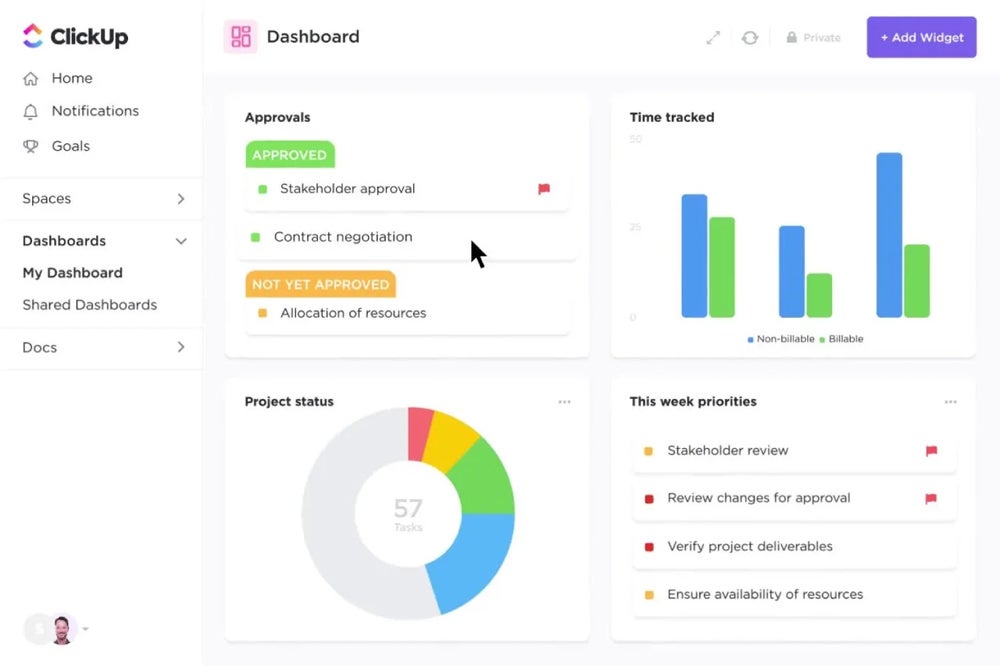
Why I chose ClickUp
I picked ClickUp for its affordability. Its pricing plans are cheap when you consider the number of features it offers, making it a good budget-friendly option for small businesses.
Pricing
ClickUp offers a generous free plan and four paid plans, allowing you to select the plan that has the features you require.
- Free: Available at no cost to all team members. This plan has the necessary features to manage basic to mid-level projects and may be enough for small teams.
- Unlimited: $7 per user per month if billed annually or $10 per user per month if billed monthly.
- Business: $12 per user per month if billed annually or $19 per user per month if billed monthly.
- Enterprise: Custom pricing.
Features
- Allows you to auto-import your work from other tools like Trello, Jira, Basecamp, Excel and more.
- Time-tracking.
- Workflow automation.
- 24/7 real-time support.
Pros and cons
| Pros | Cons |
|---|---|
|
|
For more information about the tool, explore our comprehensive review of ClickUp and learn more about its capabilities.
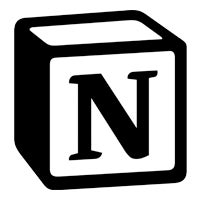
Notion: Best for creative teams and startups
Overall rating: 4.5 out of 5
Notion is a note-taking app with project management capabilities. Its versatility makes it an ideal choice for freelancers, startups and small businesses. The tool allows you to customize and configure your workflow to meet your requirements, helping you keep track of projects, tasks, and deadlines. With Notion, you can also create databases for organizing and categorizing information.
You can explore our comprehensive Notion analysis to determine if it meets your project management, note-taking and document management needs.
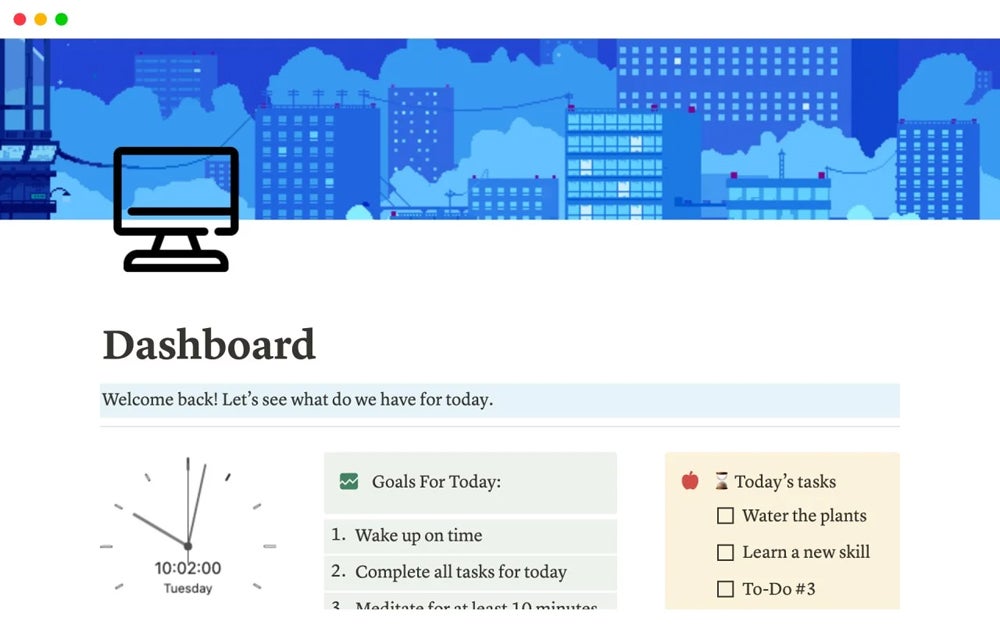
Why I chose Notion
While Coda is suitable for professional teams working on complex projects, Notion serves the needs of individuals or teams looking for an easy way to organize data and collaborate. It offers affordable plan options for small teams, making it accessible for startups and small-sized businesses. Our Coda vs. Notion review explains in detail how both tools compare in terms of features, pricing and functionalities.
Pricing
- Free: Available at no cost with basic features.
- Plus: $10 per user per month if billed annually or $12 per user per month if billed monthly.
- Business: $15 per user per month if billed annually or $18 per user per month if billed monthly.
- Enterprise: Custom quote.
Features
- Custom notion.site domain with public home page.
- Workspace analytics.
- Real-time collaboration and link sharing.
- Excellent note-taking capabilities.
Pros and cons
| Pros | Cons |
|---|---|
|
|
For more information, read our full Notion review.

monday work management: Best for large enterprises with complex project management needs
Overall rating: 5 out of 5
monday work management is one of the best project management software for teams. The tool offers various features for a wide range of purposes, including team collaboration, task management, time tracking, document management and more. It allows users to set up as many as 250,000 automation and integration actions per month, making it easy for teams to connect to the tools they already use and also automate their workflows.
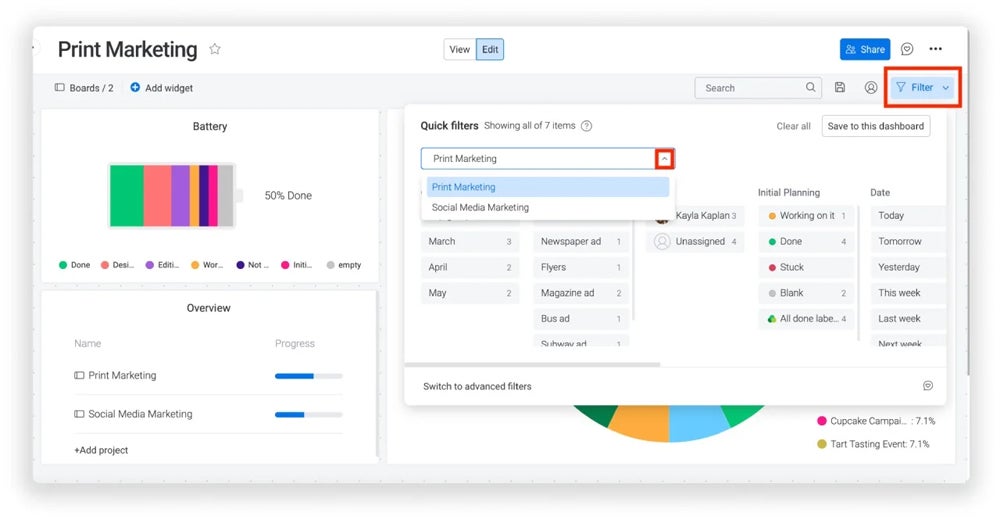
Why I chose monday work management
I selected monday work management for its versatility. The tool offers an array of functionalities that appeal to the needs of various professionals and cross-functional teams across large enterprises. You can configure monday work management to meet your requirements and personalize it to fit your specific workflows.
Pricing
- Free: At no cost for up to two users.
- Basic: $9 per seat per month if billed annually or $12 per seat if billed monthly.
- Standard: $12 per seat per month if billed annually or $14 per seat if billed monthly.
- Pro: $19 per seat per month if billed annually or $24 per seat if billed monthly.
- Enterprise: Custom pricing.
Features
- Offers over 200 templates.
- Multiple view options.
- Self-serve knowledge base.
- Reporting and analytics.
Pros and cons
| Pros | Cons |
|---|---|
|
|
Read our analysis of monday work OS to learn more about its pricing, standout features, pros and cons and top alternatives.

Wrike: Best for project process optimization
Overall rating: 4.6 out of 5
Wrike excels in facilitating detailed project planning and execution, offering tools that help teams identify bottlenecks, allocate resources and maintain transparency throughout the project lifecycle. Its flexibility makes it suitable for various industries, including marketing, IT, and creative teams, providing a tailored experience through customizable workflows and integrations with numerous third-party applications.
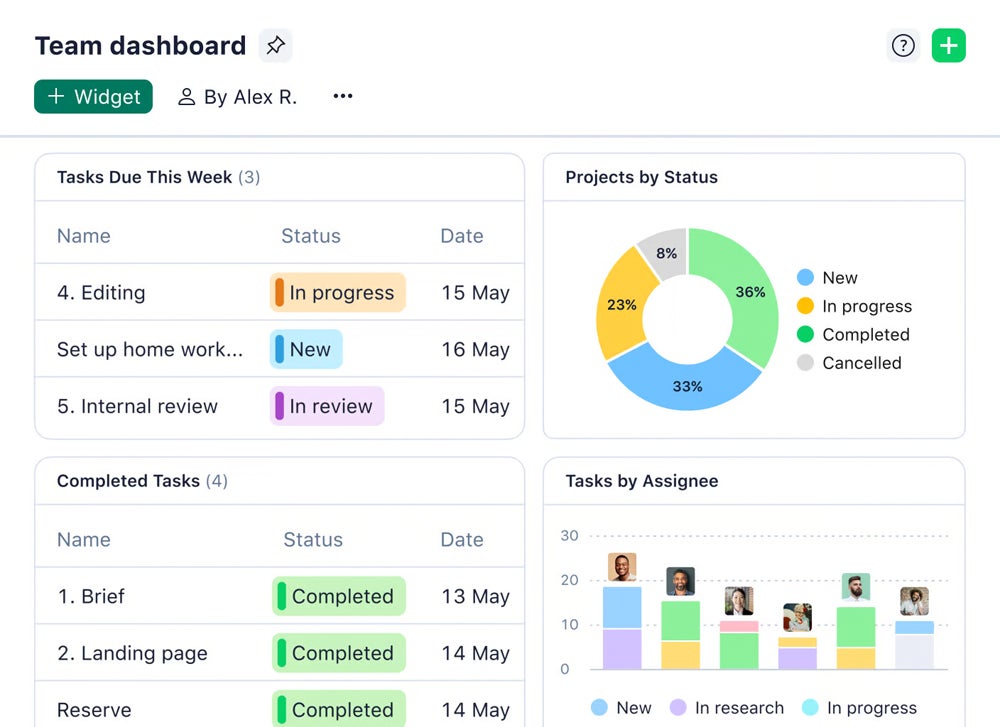
Why I chose Wrike
Wrike was chosen because of its high degree of customization. It allows you to tailor your workflows, dashboards, and reports to suit your specific project needs. This leeway ensures that Wrike can adapt to a wide range of project management styles and industry requirements.
Pricing
- Free: No cost for an unlimited number of users.
- Team: $10.00 per user per month, billed annually.
- Business: $24.80 per user per month, billed annually.
- Enterprise: Custom quote.
- Pinnacle: Custom quote.
Features
- Document processing and text recognition.
- Advanced reporting and business intelligence.
- Asset creation and collaboration.
- Advanced resource and capacity planning.
- Resource management.
- Workflow automation.
Pros and cons
| Pros | Cons |
|---|---|
|
|
For more information, read my comprehensive Wrike review to learn more about its capability.

Smartsheet: Best for spreadsheet-based project management
Overall rating: 3.8 out of 5
Unlike Coda, which integrates documents and databases into flexible workspaces, Smartsheet focuses on structured project planning and execution using familiar spreadsheet layouts. It allows users to create Gantt charts, set dependencies, manage resources and track progress through various views like grid, Gantt, and card view.
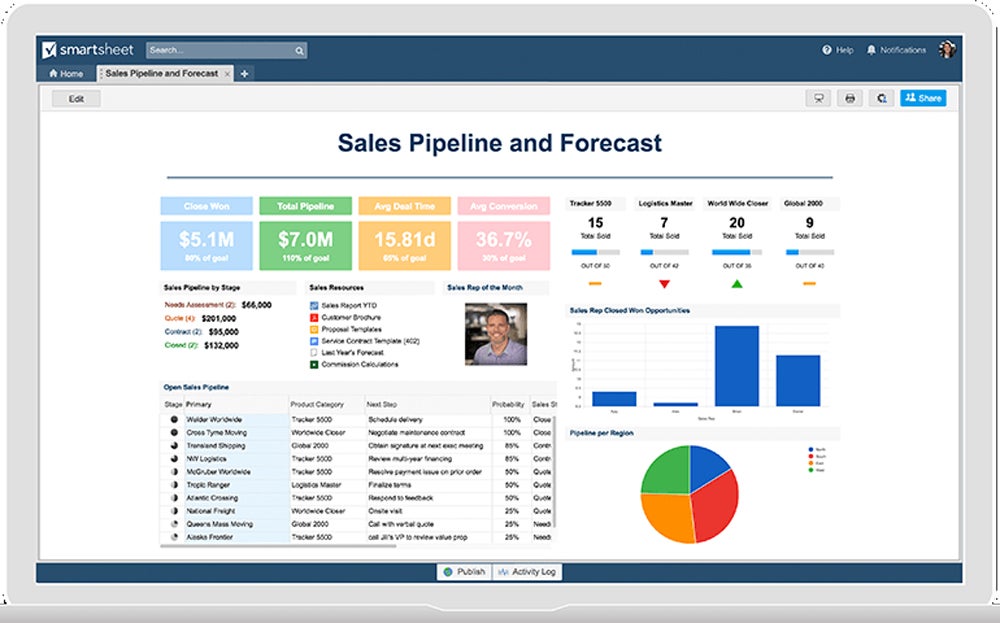
Why I chose Smartsheet
I chose Smartsheet because it provides a straightforward yet powerful way to manage projects using a familiar spreadsheet interface. Smartsheet offers the right balance of simplicity and depth in project management, which ensures seamless workflow integration and collaboration.
Pricing
- Pro: $9 per member per month if billed annually or $12 per member per month if billed monthly.
- Business: $19 per member per month if billed annually or $24 per member per month if billed monthly.
- Enterprise: Custom pricing.
Features
- Team workload tracking capability.
- Real-time communication and content collaboration.
- Project planning and scheduling.
Pros and cons
| Pros | Cons |
|---|---|
|
|
For more information, read the comprehensive Smartsheet review.
Is Coda worth it?
Yes, Coda is worth it for companies looking for a productivity tool that combines the capabilities of databases, documents, spreadsheets and collaboration tools to manage their projects, meetings and knowledge base and keep track of their objective key results (OKRs).
Coda offers extensive integration of various third-party services across different teams, including sales and marketing, product, engineering, finance, education, HR, recruiting and more, making it easy for you to connect with the tools you already use in your company.
Coda pros and cons
| Pros | Cons |
|---|---|
|
|
Do you need an alternative to Coda?
While Coda has enjoyed widespread adoption among technical teams, it may not be the best option for all teams. You may opt for a Coda alternative if you want:
- User-friendliness and ease of use: Coda’s steep learning curve and complexity can be a turn-off for users looking for a simple solution that can help them streamline their workflows.
- Low cost: Organizations on a tight budget may want to consider Coda alternatives, as the tool could be too expensive for small businesses and only moderately priced for large enterprises.
- Extensive project management features: While it offers some basic project management features, Coda lacks the advanced features needed to manage complex projects. Tech-savvy professionals may favor Coda over other tools, but organizations with various teams and departments might prefer general project management software that can be configured to meet their requirements.
Methodology
I conducted extensive research about the top Coda alternatives and selected the best options based on five parameters: ease of use, affordability, quality and relevant features, integration with third-party services and task management capabilities. I collected primary data from each of the top-rated tool vendors’ websites and secondary data from review websites to learn about current and past user experience with each tool. These pieces of information, including my hands-on experience trying these tools, were used to create each Coda alternative product overview, features, pros and cons, and pricing.




